Techinical Details
Construction of the Main Tunnel
The main tunnel was constructed with two double shields Tunnel Boring Machines (TBM).
Tunnel Boring Machines:
| Design: | Designed in Germany |
| Manufacture: | Manufactured in Germany and China |
| Specifications: | The diameters of the cutter head are 7.2m and 8.3m for the construction of the eastern and western portions of the tunnel respectively. The total length is about 170m. |
| Features: | The TBM's are equipped with multi-functional features. These include drilling, excavating, removing soils and mucking out etc. In addition, the precast concrete tunneling lining segments will be installed onto the excavated tunnel surface with the aid of the TBM. |
| After the TBM's manufactured, the machines were disassembled into parts and delivered to Hong Kong. The parts will then be reassembled at the construction site. | |
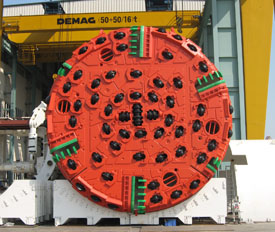 |
 |
||
| Front view of the Tunnel Boring Machine cutter head | Side view of the Tunnel Boring Machine |
Benefits of Tunneling Method
Minimize Impacts to the Environment
The excavation of the main drainage tunnel and most of the construction works for the intakes were carried out underground by using Tunnel Boring Machines and Raise Boring Machines respectively. Compared with the traditional approach of extensive road opening, the drainage tunnel approach can effectively minimize dust and noise pollution during the course of construction.
Reduce Construction Time
Tunnel Boring Machines were used to build the drainage tunnel in an efficient manner. This construction method is advantageous compared to the traditional drainage improvement works that involve extensive road opening. The use of Tunnel Boring Machines also had enabled the construction to be finished in the shortest possible time.
Eliminate Disruption to Traffic
Construction of the drainage tunnel system can considerably reduce the extent of traditional drainage upgrading works in the lower catchment areas, thus avoiding disruption to traffic which would cause inconvenience to the public.
Construction of Intakes Shaft
Under the Project, there are 34 intakes to intercept the existing drains or streams. Surface runoff intercepted by the intakes will be conveyed via dropshaft, adits and the main tunnel to the sea. Majority of the intake dropshafts was constructed by “Raise Boring Method“. Details of the Raise Boring Method are as follows:

Benefits of Raise Boring Method:
- Excavation of shafts was mainly carried out underground, thus effectively confining the noise and dust generated underground. Compared with traditional approach to excavate intakes from the ground downwards, this can effectively minimize disturbance to the environment.
- During the shaft boring upwards, excavated spoils felt down to the adit and then was removed through the tunnel. As such, the number of construction vehicles for spoil removal had been much reduced and therefore traffic impact to the vicinity can be minimized.
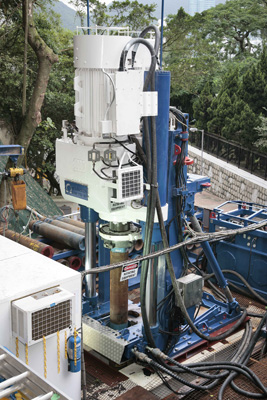 |
| Raise Boring Method is adopted to construct most of the intake shafts. |
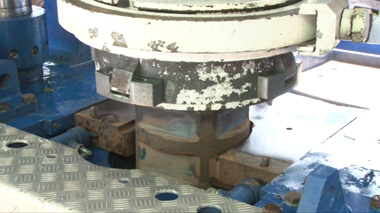 |
| A pilot drill hole with smaller diameter is drilled down to the adit. |
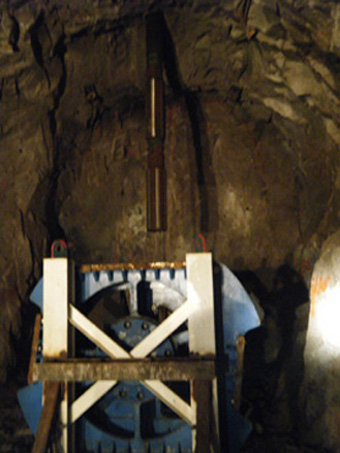 |
| When the drill reaches the bottom of the dropshaft, a larger reamer, which is transported to the dropshaft location through the main tunnel and adit, is installed to the drill rod. |
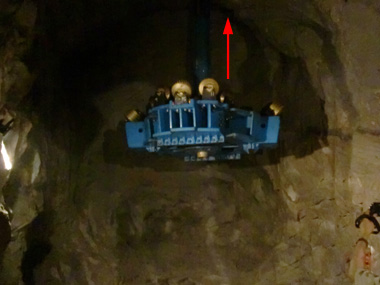 |
| The reamer will bore upward to the ground surface and excavate the shaft along the way. |
| All spoils will fall to the adit and be removed through the tunnel. |
Adit Excavation by Drill and Blast Method
In the Wan Chai and Central and Western Districts, there are a total of about 8km adits connecting the 34 intakes with the drainage tunnel. As all the adit tunnels are to be built in rock stratum deep underground, drill and blast method was deployed for the adit excavation. The blasting works have been carried out in stages since February 2010 and completed in February 2012.
All explosives were delivered by Mines Division of Civil Engineering and Development Department using special vehicles and marine vessels. The explosives delivered to the two portal sites at Tai Hang and Cyberport respectively were then be transported via the main tunnel to the adits under construction. The conveyance and use of explosives are strictly controlled.
 |
| Explosive delivery vehicle (at Western Portal site in Cyberport) |
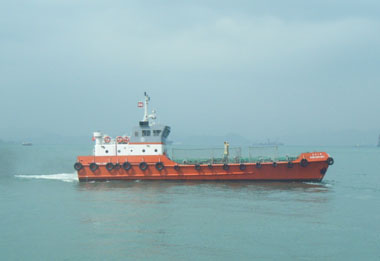 |
| Explosive delivery vessel |
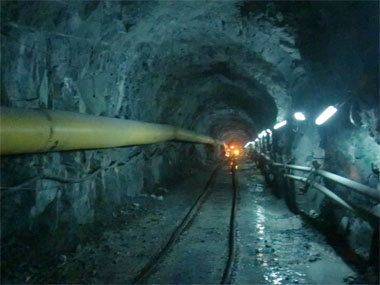 |
| General view of the adit tunnel |
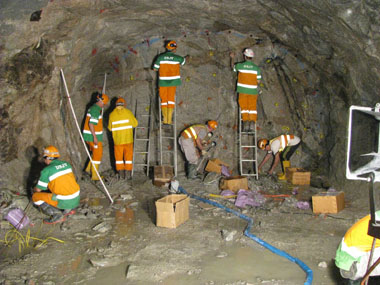 |
| Explosive installed in the rock face |
As the blasting works are to be carried out underground, the noise nuisance and disturbance to the community was minimal. Moreover, monitoring on blasting vibration and existing buildings had been conducted regularly during the adit excavation period to ensure that the blasting did not cause any impact on the nearby buildings.
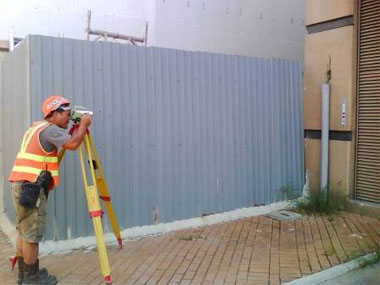 |
| Survey on the existing buildings |
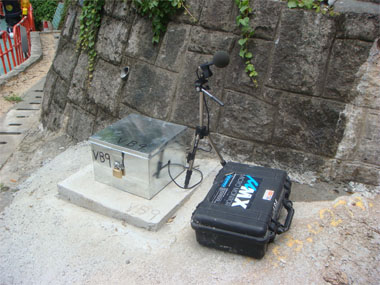 |
| Vibration monitoring device |
